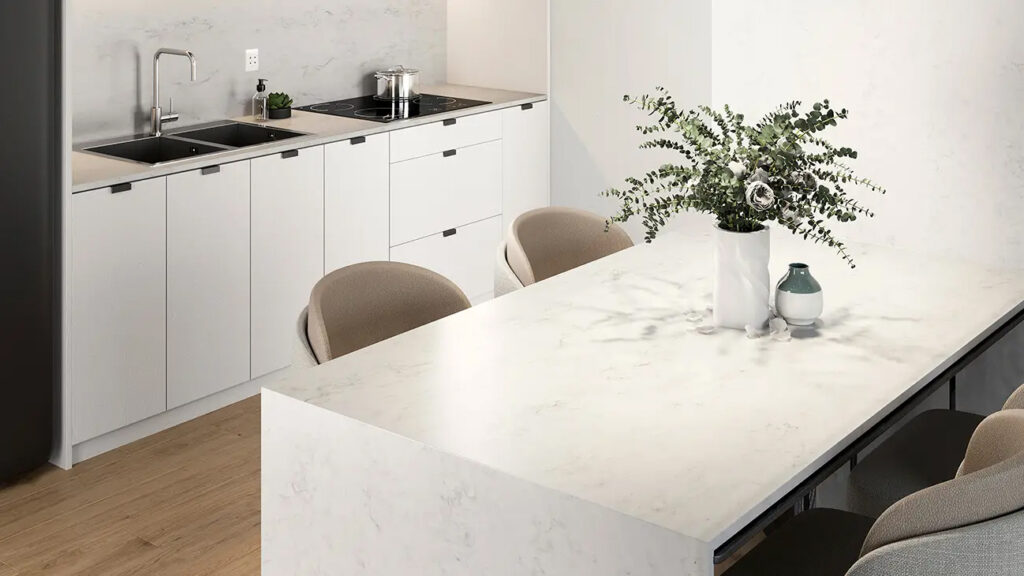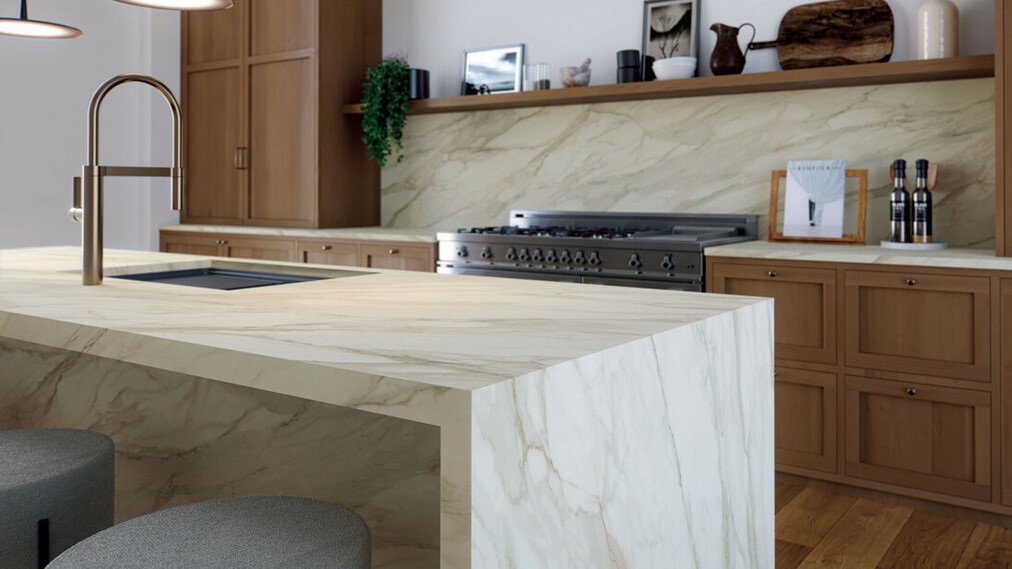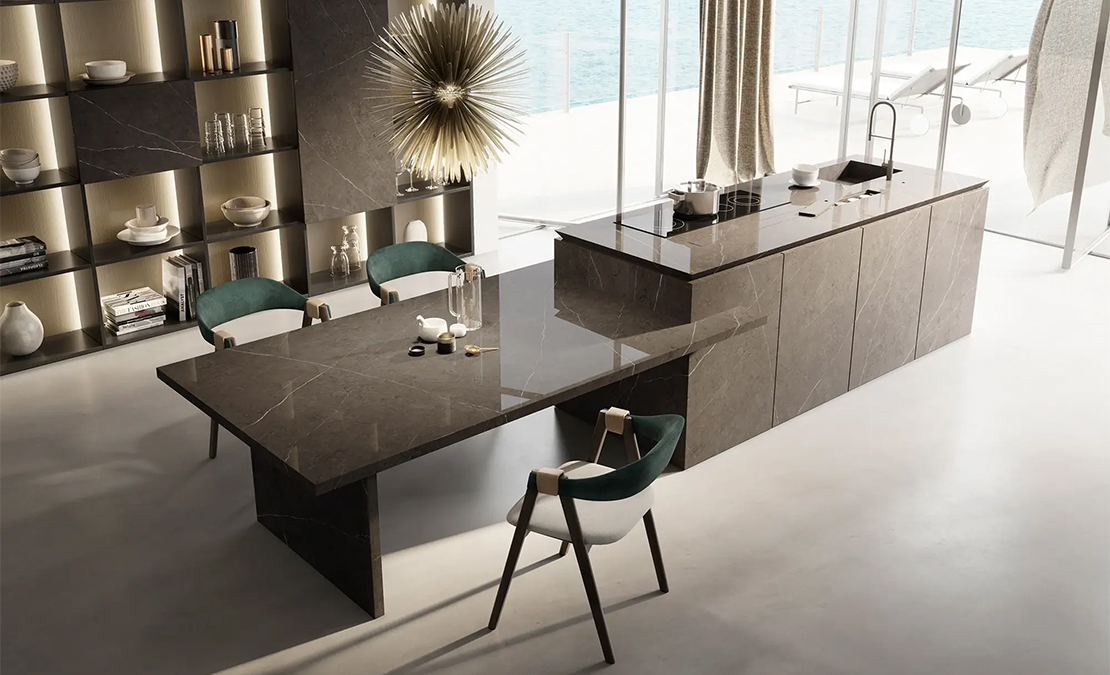Kitchen islands have become a staple in many modern homes. An island provides extra space for food preparation, dining, and storage. Islands are extremely versatile and can be customized with various features like seating, sinks, and appliances.
The popularity of kitchen islands has steadily risen over the past couple of decades. Homeowners increasingly view the kitchen as a hub for family gatherings and entertainment. Islands facilitate this by providing additional counter space for multiple cooks as well as casual seating for guests. In open-concept homes, islands also help define the kitchen within a larger living area.
Tips for Designing a Kitchen Island with Seating and Choosing the Right Countertop
When designing your kitchen island and selecting a countertop, there are a few key factors to consider:
1. Usage
How will you primarily use the island? Is it mainly for extra prep space and seating, or will it house small appliances like a microwave or be used for kneading dough and rolling out pastry? Understanding your island’s intended use will guide the design process and help you determine the size, shape, and features it should incorporate.
Selecting harder materials like granite, quartz, or porcelain will stand up well to heavy usage. More delicate options like marble or butcher block should be avoided if the island will see a lot of wear and tear.

2. Aesthetics
What overall look and feel are you trying to achieve in the kitchen? Sleek modern designs pair well with polished quartz or concrete. Farmhouse, cottage, and traditional styles tend to use softer materials like marble and butcher block. Mixing finishes can create a nice contrast too. For example, you could do a marble island top with wood base cabinets.
3. Maintenance
Some materials like quartz and porcelain are virtually maintenance-free, while natural stone and wood require more routine sealing and polishing. Marble is prone to etching from acidic foods and needs special cleaners. Think about how much upkeep you’re willing to handle when picking your top.

4. Specifications and Shape
When designing a kitchen island with seating, you will need to consider its shape and configurations. The choice of shape ranges from rectangular and square to circular and L-shaped. Selecting the right shape depends on the available space and your personal preference. Rectangular islands are popular for extra counter space, while L-shaped islands maximize corner space.
You will also want to consider the flow of your kitchen and whether you will need an island with multiple levels or an uninterrupted span of countertop. For example, you could position a lower or higher section to differentiate seating from prep space.
5. Determine the Perfect Seating
While the countertop and cabinetry play a big role in designing your island, don’t underestimate the impact of seating. Incorporating stools or chairs can take your kitchen island from purely functional to an inviting gathering spot. When selecting seating, consider ergonomic designs and appropriate seat heights to ensure comfort and accessibility.

Kitchen islands provide numerous benefits for the modern home. They offer extra prep space and a counter area in the kitchen for cooking, baking, and food preparation. Islands also frequently provide storage space with cabinets and drawers built in underneath. Kitchen islands with seating allow you to create a versatile and inviting space that serves as the heart of your home for years to come.
